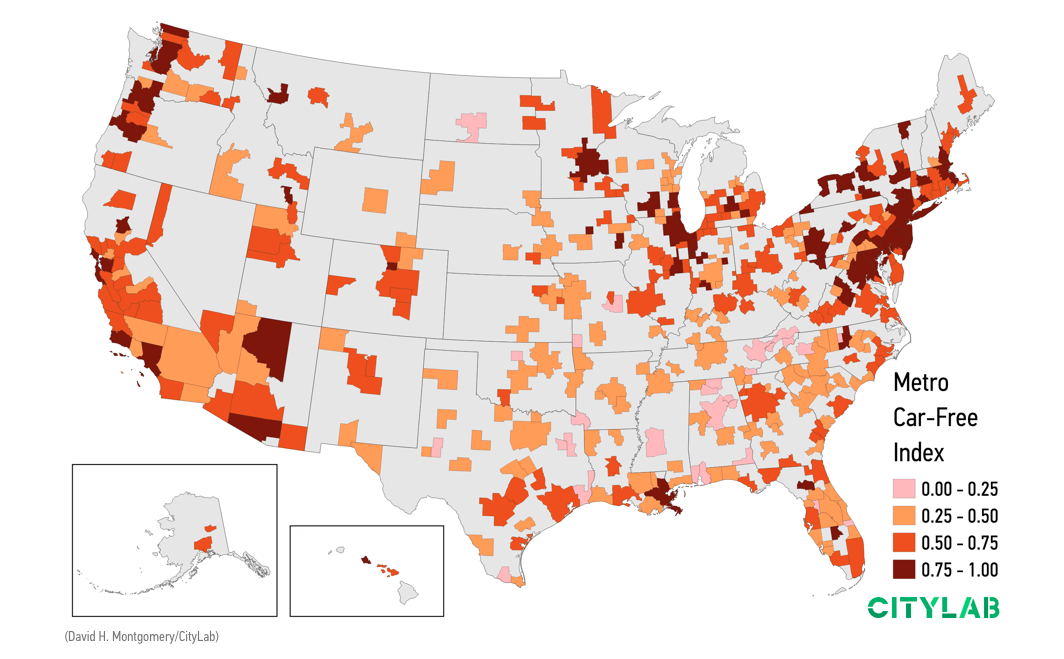Over at CityLab today, Richard Florida has a data-fueled gaze into the best and worst cities in America to live carless. Dallas doesn’t do so hot.
Dallas-Fort Worth-Arlington slides in as the seventh-worst place to walk among large metros, and the largest one in the bottom 10. Others making that list are places like Birmingham, Nashville, Raleigh, and Sherman, our neighbor to the (far) north. “With the exception of Dallas, these are not-so-large metros with less traffic congestion, where it is relatively easy to get around by car,” writes Florida.
The urbanism-focused site formed its metric with four factors: “the share of households that don’t have access to their own vehicle, the share of commuters who take transit to work, the share of commuters who bike to work, and the share of commuters who walk to work.”
Maybe we’d fare better if we embraced the bus or added more bike lanes. Readers of this blog are familiar with our ad nauseam documentation of the troubles for Dallas walkers, as well.
As it is, living car-free in Dallas is difficult but not impossible. D CEO Editor Christine Perez—who lives and works downtown—wrote in July about ditching her car and never looking back. Carless D contributor Doyle Rader’s recent dispatch from DART’s North Dallas meeting on the Cotton Belt Line includes his trip to and from downtown via public transit. It took three hours round-trip. “Yet, for all of its inefficiencies, I can’t call DART altogether ineffective,” Rader writes. “It will get you where you are going, but it will test your patience.”
Florida ends with this:
“Ironically, despite the expense of owning a car, going carless in America often requires having money. It helps if you can afford living close to where you work or near good transit, or in a walkable neighborhood with most of life’s necessities close by.”
That’s right in line with the work of researcher Christopher Leinberger, who mapped out all of the walkable, urban places in Dallas-Fort Worth. He and his colleague Tracy Loh coined the term “WalkUPs” to describe these areas.
These are intensely desirable but only occupy about .12 of 1 percent of our region’s landmass. Rents in these neighborhoods are 37 percent higher and account for 12 percent of DFW’s gross regional product despite being such a tiny portion. Those are the neighborhoods where you can be like Christine Perez and live and work and play without a vehicle. Those are the areas near grocery stores and doctor’s offices, where you can make do without having to get on the freeway. Reports like these show the potential for Dallas to embrace these areas even more: if we don’t, we’ll still be faced with the sprawl that got us here.





